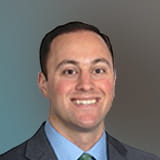Speaking recently at a virtual industry conference, the head of the Centers for Medicare & Medicaid Services (CMS) Seema Verma said that some of the agency’s most highly publicized value-based alternative payment models have failed to deliver on their promise of lower costs and higher quality care. “I think the issue we have in value-based care is that many of our models unfortunately are not working the way we would like them to,” she said. “They are not producing the types of savings the taxpayers deserve,” delivering a “very poor return in investment,” Verma added.
Verma’s comments echo those made by other top CMS officials recently. Brad Smith, who leads CMS’s work on alternative payment models as the Director of its Center for Medicare and Medicaid Innovation (CMMI), recently said that only five out of the 54 value-based payment models run by CMMI over the past decade have produced savings for CMS. Smith said that most models instead landed in "the break-even range" or lost money.
Even the Medicare Payment Advisory Commission (MedPAC), the influential independent agency that advises Congress on Medicare issues, said at its most recent meeting that CMS needs to rethink its advanced alternative payment models because they have failed to achieve cost savings. Most members of the commission supported
taking a broader look at the program and creating more long-term goals for it.
Unsurprisingly, with such widespread and prominent criticism of these payment models, changes are expected. However, rather than turning back and abandoning the transition to value-based payments, CMS officials have signaled their desire to pivot and accelerate the pace and scope of the transition.
New Payment Models
In September, CMS finalized a new mandatory value-based payment model for patients with kidney disease and a new mandatory value-based payment model for cancer patients receiving radiotherapy treatment. Rather than voluntary models that offer healthcare providers the option to participate, these models require mandatory participation for a select group of providers.
Meanwhile, in their recent critiques of CMS’s current payment models, both Verma and Smith noted that mandatory models that required downside risk were showing positive results. Verma praised the Pathways to Success model that overhauled CMS’s accountable care organization (ACO) program in 2019. “We are already seeing significant savings and increases in quality,” Verma said. Smith said that models which focused on a global budget fared much better than those that didn’t, giving Maryland’s Total Cost of Care model as an example.
Both officials also admitted that a major problem has been that the current models were set up primarily to encourage participation among providers. “They weren’t set up to garner savings to produce necessarily better outcomes for patients,” Verma said.
In response, officials are eying a shift away from “upside only” models where providers are not held financially accountable for failing to produce results. Verma noted, “I think it is important for providers to have skin in the game. Just having upside risk doesn’t really produce the type of savings and quality measures that we want to see.”
What Providers Should Expect
As a result, providers of all shapes and sizes – health systems, physician groups, community health centers, etc. –should expect CMS to pivot its strategy regarding these programs from encouraging participation to ensuring financial accountability. This will likely be accomplished by requiring downside risk, making more models mandatory, and making more changes permanent, rather than experimental or temporary.
Of course, many of these changes will have to wait until the COVID-19 pandemic subsides. CMS has offered alternative payment model participants waivers from most program requirements for the 2020 participation period and/or the extent of the public health emergency.
The results of the upcoming election could also have some impact on the future of these programs. However, both political parties support the transition to alternative payment models and in fact, the same CMS Innovation Center that the Trump Administration is currently focused on was created in 2010 when Joe Biden was Vice President.
Subscribe to the NextGen Advisor blog to stay updated on regulatory news and information impacting the healthcare community.
Meet NextGen Ambient Assist, your new AI ally that generates a structured SOAP note in seconds from listening to the natural patient/provider conversation.
Read Now